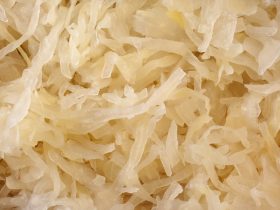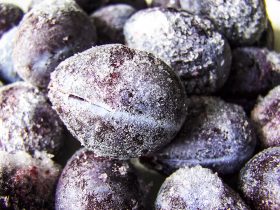It is an uncommon fact that the term oyster actually refers to a multitude of different species, though only some are considered safe for consumption1. Because of this distinction, it must be made clear that this article primarily focuses on the species known as the Pacific oyster, as well as similar species that are edible for humans.
In short – yes, Oysters can and should be frozen, either shucked or still present within their shells. While oysters are notorious for causing food poisoning due to spoilage2, one does not need to worry if the proper precautions and storage procedures are employed.
How to Know if Oysters are Old Before Storing Them
The most vital step when storing oysters is to ensure that they have not started to spoil.
Keep in mind that this portion of the article is meant for oysters still in their shells, as shucked oysters are harder to check for signs of spoilage.

Upon purchasing your oysters, inspect each individual one, making certain that the oysters are still alive by tapping a fingernail on the outer shell. If the oyster closes its slit, then the produce is as fresh as possible and can be stored.
If the oyster shell remains open and shows indications of dryness inside, dispose of it immediately; Food poisoning and vibriosis are not worth the risk.
How Long Do Oysters Last in the Freezer
Freezing oysters is far more advisable than simply storing them in the fridge, though it is not without its own drawbacks. Keep in mind that the process of freezing your oysters will harm their texture and taste, and that oysters are best consumed fresh.
Oysters will last up to an entire year in the freezer, if stored in the perfect conditions.
What Do You Need to Freeze Oysters?
All that is needed to freeze your oysters is a bowl, an oyster knife and a resealable freezer bag or plastic pouch.
If you do not have an oyster knife at your disposal, a paring knife may act as a replacement, though care must be taken not to cut yourself or the oyster’s flesh.
How to Freeze Oysters
In order to freeze your oysters, the first step is to wash the shells thoroughly, inspecting each to determine if any have died. Dispose of these, as they are potentially toxic to consume.
Once the still living oysters have been separated and cleaned, shuck the oysters into a bowl in order to preserve the liquid – known as oyster liquor – present inside the shells. Remove any dirt or bits of shell present within this oyster liquor.
Rinse the now shucked oysters gently, taking care not to drown them. Place the oysters within your resealable plastic pouch or freezer bag.
Once securely contained, pour the oyster liquor into the bag, as this will help sustain the oysters as well as preserve the flavor.
Leave an approximate inch of space between the oysters and the top of the bag in order to account for expansion of the liquid. After this, simply place in the freezer for up to a year.
How to Thaw Oysters
Thawing your oysters is as simple as taking the bag from the freezer and placing it in the fridge overnight.
Should your need to thaw the oysters be more immediate, it is possible to place the oysters in whatever dish you are cooking. Obviously, this is not as applicable if the dish calls for raw oysters.
How Long Do Oysters Last Outside of the Freezer?
As oysters are consumed either within their shells or shucked, the exact length of time an oyster will last with no forms of preservation is highly variable.
If shucked, it is entirely possible for the oyster to be harmful and inedible within two hours. Ensure that the oysters remain in their shells and frozen/refrigerated for as long as possible before consumption.
How Long Do Oysters Last in the Fridge
The shelf-life of an oyster is extended when placed in the fridge by up to a month, depending both on the temperature of your fridge and the method of storage.
If you choose to store shucked oysters instead of whole oysters, they will only last as long as seven days from the moment they are removed from their shells.
However, if instead you are storing oysters still present within their shells, they may last up to a month so long as they are fresh upon placing in the fridge.
To store your live shelled oysters in the fridge, first thoroughly wash the surface of the shells, removing any stray debris or dirt. Place the oysters curved-side down in a plastic container with no lid so as to allow them to breathe.
Drape a damp cloth over the oysters before storing the container in the fridge. Make certain that they are stored away from any fans in your fridge, as this will suffocate and kill the oysters.
Signs that Oysters have Gone Bad
As oysters are infamous for causing food poisoning as well as a potentially fatal condition known as vibriosis, it is important to ensure that your oysters are in no way spoiled.
Apart from simply tapping the shell to determine if they are alive, shucked oysters can present several signs of spoilage.
The clearest and most telling sign of oysters going bad is a rotten-egg odor, which indicates that bacteria have colonized the shellfish and that it is no longer safe for consumption.
Another indicator of spoilage is if the flesh of the oyster has grown discolored or dry. This often is a sign of poor storage, and it is best to investigate the entire batch of oysters for similar features.
Keep in mind that after freezing, the oyster flesh may have dark spots or dry portions, especially if kept frozen for several months. This is not necessarily a sign that they are going bad, though the oyster may have a compromised texture and taste.
References:
1. Merriam-Webster. (No Date). “Oyster”. In Merriam-Webster.com dictionary https://www.merriam-webster.com/dictionary/oyster
2. United States Food and Drug Administration (October 2018) “The Danger of Eating Contaminated Raw Oysters”





Hi, I'm Dom
Dom Eats was started to help other people fall in love with food. While cooking can feel intimidating, it doesn't have to be.